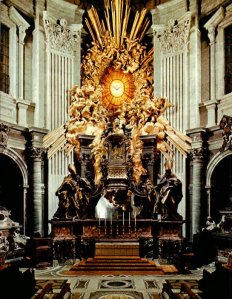
Located on Eveleigh Street in Australia
It seems like people often associate high quality art with a high social status and the privileges associated with it. Luckily, this mindset is not widespread, allowing the popularity of somewhat primitive pieces to continue unhindered. Very little about this painting is can be found on the internet other than its location next to a railway station in Australia, yet that does not take away from the simple beauty of the work. Perhaps the most wonderful part of a piece like this is how people can dismiss their own personal stereotypes and appreciate the art for what it is. It doesn’t matter who painted it or how much money they have or what they used for ingredients in their paint, all that matters is the emotions that it invokes in the viewer. Aboriginal art is especially distinct due to its dotting paint affect. I honestly do not know what this is called, but the end result is an almost pixelated image that comes together in a very unique way and is unforgettable to anyone that sees it. The placing of geometric rings, bands, and their colors is also quite iconic of the pure Australian heritage that is aboriginal art





